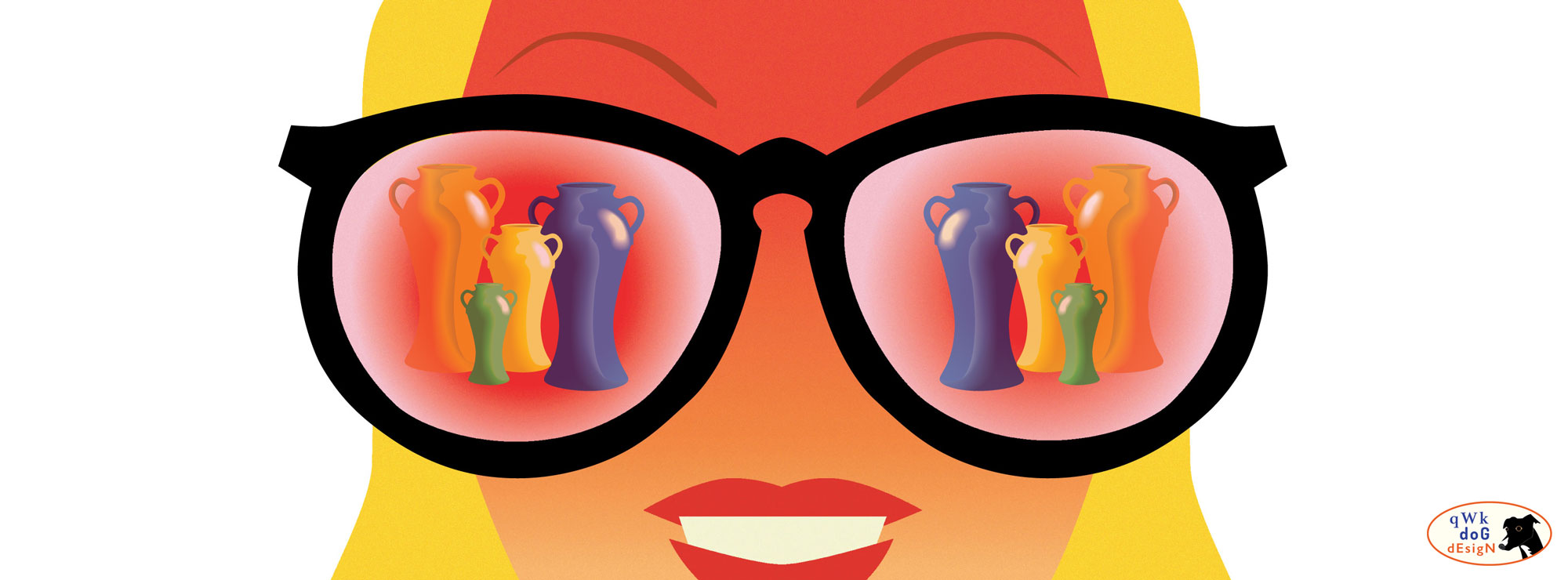Through the 1920s, European porcelain and china dominated tables in the United States. But the years following World War I brought a trend in more casual dining. Fewer people, if any, had servants required for formal dinner services, and prohibition brought an end to some of the fancier (and liquor-rich) French food popular in the late teens. Increased commercial food manufacturing reduced the amount of time women spent cooking in the kitchen. Life in general was becoming more casual and automated.
Most of the major Southern California potteries were busy producing commercial and residential tile, earthworks and sanitary ware to support the building boom of the 1920s. With the collapse of the California real estate market in the late 1920s, the potteries turned to dinner and gardenware to supplement their revenues. Of the original “big five” Southern California potteries – Gladding-McBean (Franciscan), Metlox, Vernon Kilns, Pacific Pottery, and JA Bauer and Sons, and the mid-coast Garden City Pottery of San Jose – only Vernon Kilns had experience manufacturing dinnerware (under an earlier incarnation of the company known as Poxon China).
The popular West coast design of styles of day (Mission, Spanish Colonial Revival, California Bungalow, Art Deco and Asian-influenced themes) carried over into their houseware designs. In another uniquely Californian twist, brightly colored glazes were introduced to enhance the simple geometric and decorative patterns. Bright colors and glazes were being used in art deco pottery design in Europe during the same period, but primarily as a decorative element. While East coast manufacturers such as Fulper/Stangl pioneered solid-color dinnerware patterns in the late 1920s, California potteries are attributed with making the glazes commercially viable.
While many California potteries began producing early colorware in the late 1920s, JA Bauer is attributed with the first large-scale commercial production of their colored plainware lines in 1927. By 1930 Brayton-Laguna and Catalina Island Pottery were in production, and by 1932-35 Pacific Pottery, Metlox, Gladding-McBean, and Vernon Kilns all offered popular colorware lines. Ohio Valley potteries quickly followed, with Homer Laughlin’s wildly popular Fiesta line going into full production by 1936. Laughlin’s vast production and distribution capabilities brought colorware to every corner of the United States. While several of the California potteries had national distribution at higher-end department stores, Homer Laughlin dominated more “economically friendly” chains, like Woolworth’s.
The 1930s was characterized by two distinct color themes in dinnerware. The first wave dominated from around 1930 to 1938 and is characterized by bright and bold colors. Each manufacturer selected a palette of colors for their dinnerware lines, and where possible, colors that could distinguish themselves from their competitors. However, almost all of the colors fall into the list shown to the left.
No design style lasts forever. Changing consumer tastes in the late 1930s lead to a softening of the dinnerware color palette. Additionally, the government began to appropriate the heavy metals used to make colorware glazes vibrant, leaving ceramic engineers scrambling to find new glaze combinations that would still be effective and appealing to consumers. While many potteries continued to offer their “brights,” pastel colors became all the rage. In fact, many bright dinnerware lines were just reglazed in pastels and given a new name. Popular pastel California dinnerware lines (1938-42) include Metlox Yorkshire, 200 Series; Vernon Kilns Modern California, Ultra California; Bauer La Linda; Pacific Pottery Arcadia; and GMcB Franciscan Coronado.
The trend was not specific to California potteries. Other manufacturers including Homer Laughlin (Serenade, Nautilus) and Taylor, Smith & Taylor (Lu-Ray) among others followed the pastel bandwagon. However, with most manufacturing companies — potteries included — switching over to war production around 1942, dinnerware production slowed dramatically. In the period that follows, another design shift takes hold. Gladding-McBean introduces a new hand-painted pattern called “Desert Rose,” and for most of the 1940s, hand-painted dinnerware lines (commonly florals, fruits, and plaids) are the rage.







